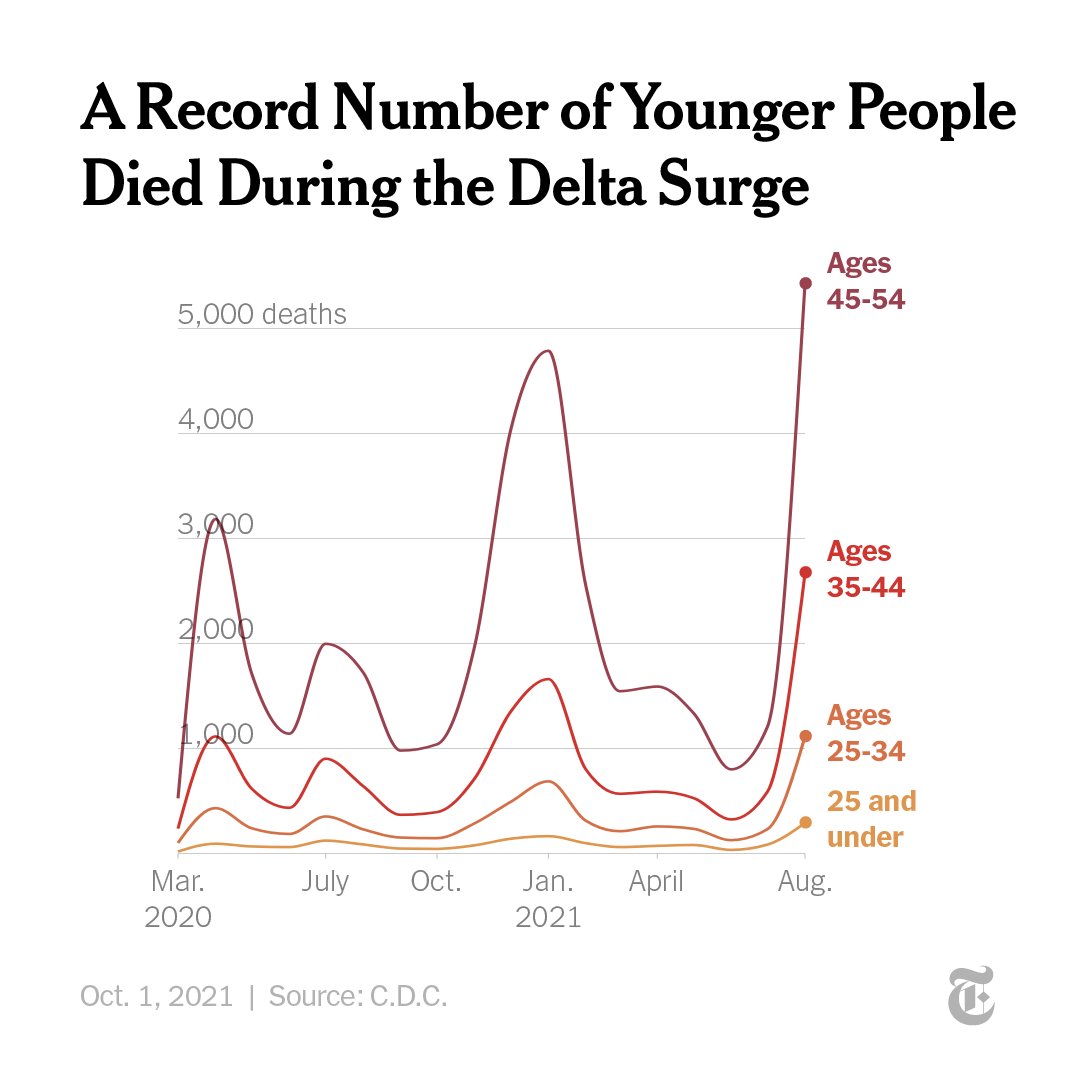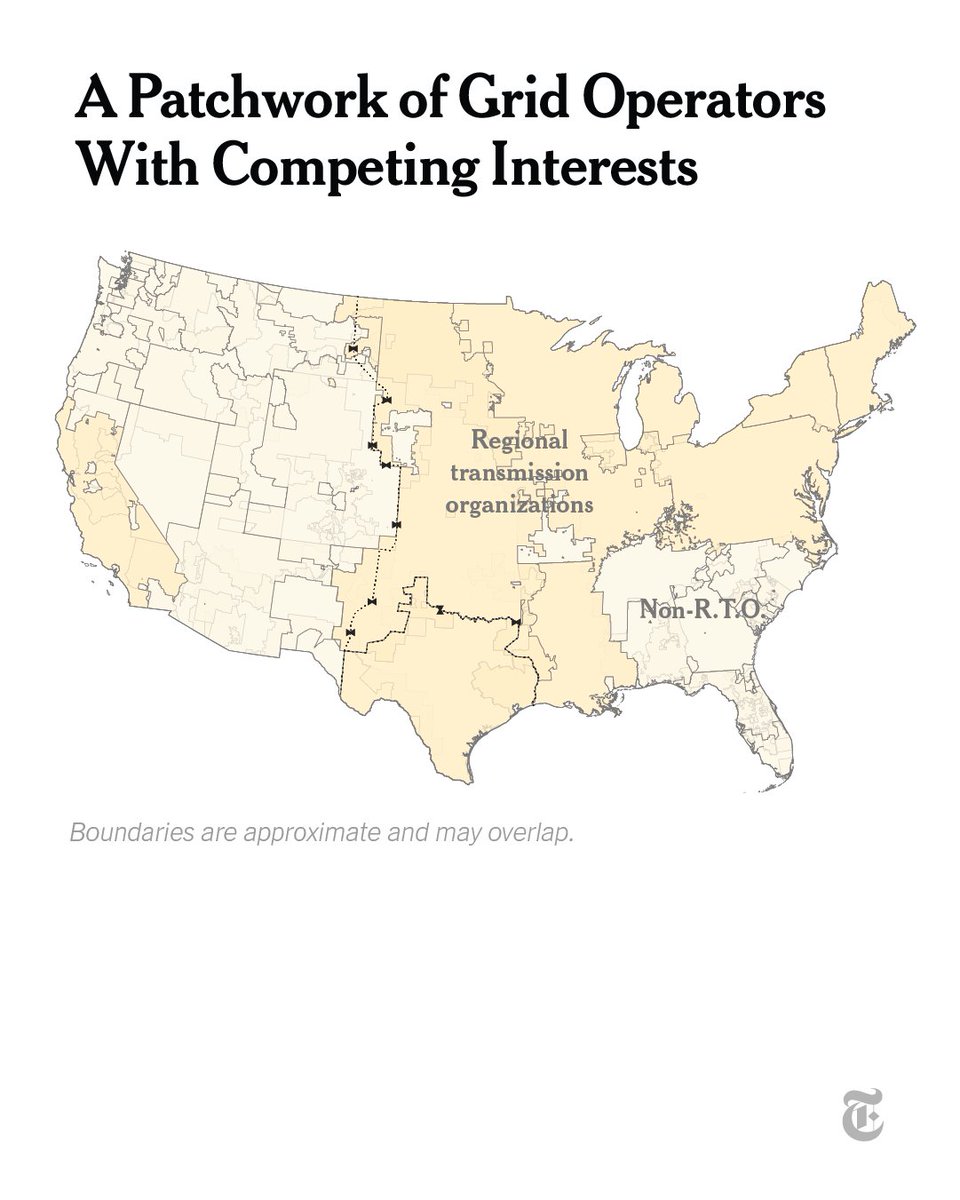Nearly 700,000 people in the U.S. have now died of Covid-19 — making this the deadliest pandemic in American history.
A majority who died recently were in the South and unvaccinated. Many of the victims were also younger than before. nyti.ms/2Y6UOlR
A majority who died recently were in the South and unvaccinated. Many of the victims were also younger than before. nyti.ms/2Y6UOlR
Recent victims of Covid stand apart from those who died in previous surges, our analysis shows.
Before the Delta surge, the worst-hit states were mostly in the Northeast. Many recent deaths were in the South, including Florida, Mississippi and Louisiana. nyti.ms/2Y6UOlR
Before the Delta surge, the worst-hit states were mostly in the Northeast. Many recent deaths were in the South, including Florida, Mississippi and Louisiana. nyti.ms/2Y6UOlR

The U.S. has had one of the highest recent death rates of any country with an ample supply of vaccines.
An overwhelming majority of Americans who died from Covid-19 in recent months, when the country has had broad access to shots, were unvaccinated. nyti.ms/2Y6UOlR
An overwhelming majority of Americans who died from Covid-19 in recent months, when the country has had broad access to shots, were unvaccinated. nyti.ms/2Y6UOlR

A study from the CDC that was published in September found that unvaccinated people were more than 10 times as likely to die of the virus as the vaccinated were.
The study, which spanned from April to mid-July, used data from 10 states. nyti.ms/2Y6UOlR
The study, which spanned from April to mid-July, used data from 10 states. nyti.ms/2Y6UOlR

Those who died of Covid-19 recently were younger: In August, every age group under 55 saw its highest death toll of the pandemic. Those in older age groups continued to make up the majority of deaths. nyti.ms/2Y6UOlR 

Younger people are vulnerable to Covid infection now because they have a relatively low vaccination rate and are interacting with one another more, leading to more opportunities to be infected, said a professor of epidemiology at the University of Florida. nyti.ms/2Y6UOlR 

The pace of death has quickened and slowed as the virus ripples across the U.S. in waves.
By late September this year, more than 2,000 people on average were dying from the virus each day, a level the country has not reached since February. nyti.ms/2Y6UOlR
By late September this year, more than 2,000 people on average were dying from the virus each day, a level the country has not reached since February. nyti.ms/2Y6UOlR

Wayne Bright, a funeral home director in Florida, says lately he's been confronted with unimaginable problems: casket shortages, hospitals with full morgues and a need to schedule burials weeks into the future so cemeteries will have vaults available. nyti.ms/2Y6UOlR 

Recent deaths have left families, some of whom said they had thought the pandemic was largely over, devastated. But James Pollard, a Kentucky coroner, hears a frequent refrain: family members who vow to be vaccinated after losing a relative to the disease. nyti.ms/2Y6UOlR
• • •
Missing some Tweet in this thread? You can try to
force a refresh















